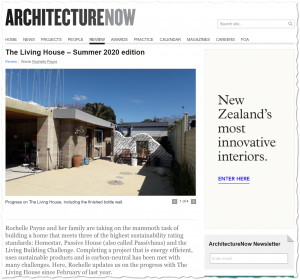“What I didn’t realise is that Passivhaus is actually a simplification of design, where I originally thought it was all about complicated mechanical systems. This speaker made me realise that Passivhaus and earth building could be a match made in heaven.”
—Editor, Earth Building
I’ve struggled myself to explain Passive House in a way that people can grasp.
From the comments here, it seems Rochelle Payne has built a bridge and helped some folks cross it. I’m impressed and thankful.
Rochelle and her partner embarked on what is perhaps New Zealand’s most ambitious home building project, aiming at Passive House, Homestar and Living Building Challenge ratings.
Her honest description of the challenges they faced last year may make you wince. But there’s good news up the end of the article.
Rochelle says she modified her presentation at the South Island Earth Building Association NZ conference in Cromwell last year when she realised that some of the audience were quite actively anti-Passive House. It sounds like she won them over. She quotes the editor of Earth Building magazine describing her presentation thus:
“I sat up straight at our conference when one speaker spoke about Passivhaus [Passive House]. I think I may have been assuming that Passivhaus required you to live in a hermetically sealed box, divorced from nature and the natural environment. Instead, Passivhaus was explained as a design philosophy, one that asks designers and builders to carefully consider window size, dwelling orientation etc to optimise (not maximise) solar gain. The speaker advised that the purpose of the Passivhaus standard is to create a dwelling with a low heating demand in winter that won’t overheat in summer (not always the case in passive solar).”
“Yes, Passivhaus uses very exacting science to design homes to the highest possible standard, but the reason for this is that Passivhaus wants is to provide you with a warm, dry and comfortable house. Using this science allows the avoidance of draughts or leaks—too common in many houses—and ensures that any ventilation (windows, skylights etc.) is by choice. Apparently, it is not the case that a passive house has to be a hermetically sealed bubble—it should just be airtight with no unintended draughts.”
—18 February 2020
